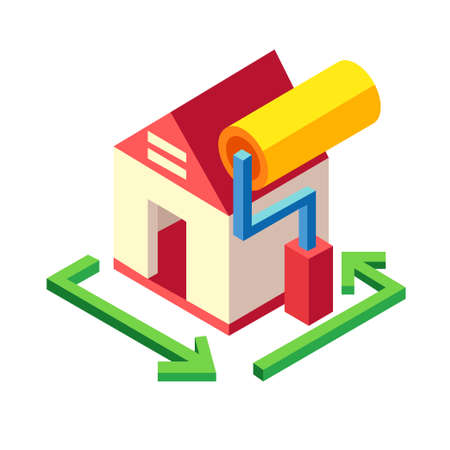1. Understanding Different Types of Homeowners Policies
Before you can successfully transition between homeowners insurance policies, its important to understand the different types available in the U.S. Each policy type is designed to fit specific property types and coverage needs. The most common policy forms are HO-1 through HO-8, each with unique features and protection levels.
Overview of Policy Types
The table below summarizes the main homeowners insurance policy forms and what they typically cover:
| Policy Type | Coverage Scope | Best For |
|---|---|---|
| HO-1 (Basic Form) | Covers a limited list of perils (like fire, theft, vandalism) | Older homes or budget-conscious homeowners (rarely offered today) |
| HO-2 (Broad Form) | Covers more perils than HO-1, still named-peril only | Homeowners seeking broader but not comprehensive coverage |
| HO-3 (Special Form) | Covers all perils except those specifically excluded; most popular option | Most single-family homeowners |
| HO-4 (Renter’s Insurance) | Covers personal belongings and liability for renters | Renters, not property owners |
| HO-5 (Comprehensive Form) | Offers the broadest coverage for both home and belongings; open-peril basis | Homeowners wanting maximum protection for newer homes |
| HO-6 (Condo Insurance) | Covers personal property and interior structure within a condo unit | Condominium owners |
| HO-7 (Mobile Home Insurance) | Similar to HO-3 but for mobile or manufactured homes | Owners of mobile or manufactured homes |
| HO-8 (Modified Coverage Form) | Covers older or historic homes where replacement cost exceeds market value; named-peril basis | Owners of historic or high-value older homes |
Main Differences Between Policies
- Name Peril vs. Open Peril: Some policies only cover risks that are specifically listed (“named perils”), while others protect against everything except what is excluded (“open peril”). HO-3 and HO-5 are open peril for structures, which means broader protection.
- Property Type: Whether you own a single-family home, condo, mobile home, or rent an apartment affects which policy you need.
- Certain Needs: If your home is older or historic, or if you’re looking for budget options, some policies are better suited to your situation than others.
- Breadth of Coverage: HO-5 offers the broadest coverage but may come at a higher cost. HO-1 and HO-2 offer basic protection but may leave gaps in coverage.
- Personal Belongings & Liability: All policies include some level of personal property and liability coverage, but limits and covered events vary by form.
Selecting the Right Policy Type for Your Needs
The right homeowners policy depends on your property type, its age, your budget, and how much risk you’re willing to take. Familiarizing yourself with these policy types is the first step toward making a smooth transition if your needs change over time. In the following steps, well walk through how to switch from one policy type to another so your home stays protected as your circumstances evolve.
2. Evaluating Your Current Coverage and Future Needs
Before you jump into switching your homeowners insurance policy, it’s important to take a close look at what you currently have and what you might need in the future. This will help ensure that your new policy actually fits your life, home, and budget better.
Assess Your Existing Insurance Policy
Start by reviewing your current policy documents. Check for key details such as:
- COVERAGE LIMITS: How much coverage do you have for your dwelling, personal belongings, and liability?
- DEDUCTIBLE AMOUNT: What do you pay out of pocket before insurance kicks in?
- EXCLUSIONS: Are there any events or damages that are not covered?
- ADDITIONAL COVERAGES: Do you have add-ons like flood, earthquake, or identity theft protection?
Consider Life or Property Changes
Your insurance needs can change over time. Ask yourself if any of these situations apply to you:
| Change | Impact on Insurance Needs |
|---|---|
| Bought New Valuables (jewelry, electronics) | Might need higher personal property limits or special endorsements |
| Remodeled Home | Could require higher dwelling coverage to reflect increased value |
| Addition of Family Members | May increase liability needs or require more living expense coverage |
| Began Renting Out Part of Home | Might need landlord or rental coverage options |
| Moved to an Area Prone to Natural Disasters | Might require specialized policies (e.g., flood or earthquake) |
Determine Why You Need a New Policy Type
If your circumstances have changed or if you simply want better protection, consider what type of homeowners policy would fit best. Here are some common reasons people switch policy types:
- SAVING MONEY: Looking for lower premiums with similar or better coverage.
- BROADER PROTECTION: Need for all-risk/open-peril instead of named-peril policies.
- CUSTOM FEATURES: Wanting extra coverages like home business protection or green home upgrades.
- EASIER CLAIMS PROCESS: Prefer an insurer known for hassle-free claims service.
Quick Checklist: Is It Time for a Change?
- Your home value has increased significantly.
- You’ve made major purchases or renovations.
- You’re paying too much for too little coverage.
- Your current insurer doesn’t offer the features you want.
The goal is to match your insurance policy to your real-world needs—so take time to review, think ahead, and pinpoint what matters most for your peace of mind and financial security.

3. Comparing Policies and Providers
When you’re ready to switch your homeowners insurance policy, it’s important to take some time to compare different policies and providers. Shopping for updated coverage can feel overwhelming, but breaking it down step by step makes it much easier. Here’s what you need to know:
Shopping for Updated Homeowners Policies
Start by gathering quotes from several insurance companies. Most major insurers offer online quote tools, making it easy to compare options from the comfort of your home. You can also work with an independent agent who can shop around on your behalf.
Key Factors to Compare Among Insurance Companies
| Factor | What to Look For |
|---|---|
| Premium Cost | The amount you’ll pay annually or monthly. Make sure to compare similar coverage levels. |
| Deductibles | The out-of-pocket cost before insurance kicks in. Lower deductibles usually mean higher premiums and vice versa. |
| Coverage Limits | The maximum amount the insurer will pay for a covered loss. Confirm if limits meet your needs. |
| Policy Exclusions | Specific situations or items not covered by the policy. Read the fine print carefully. |
| Customer Service Ratings | Reviews and ratings from current customers about claim handling and support. |
| Discounts Available | Ask about bundling, security system discounts, or loyalty benefits. |
Understanding Premium Differences, Deductibles, and Policy Exclusions
Premiums: Your premium is the price you pay for coverage. It can vary based on your home’s location, age, condition, and even your credit score. Bundling with auto insurance may lower costs.
Deductibles: This is what you pay out of pocket before the insurance company covers damages. If you want lower monthly payments, consider a higher deductible—but make sure you could afford that amount in an emergency.
Policy Exclusions: Every policy has exclusions—things it won’t cover, such as certain natural disasters (like floods or earthquakes), wear and tear, or high-value personal items unless specifically listed. Make a checklist of what matters most to you so you can spot any gaps in coverage.
Tips for Making Smart Comparisons
- Create a spreadsheet or use a comparison chart (like the one above) to track differences between companies and plans.
- Don’t just focus on price—consider customer service reputation and claims process speed as well.
- If anything is unclear, ask questions! Good insurers are happy to explain details or clarify confusing terms.
- If you have unique needs (such as coverage for valuable jewelry or a home business), make sure these are addressed in each quote you receive.
4. Coordinating the Transition Process
Reviewing Cancellation Steps for Your Existing Policy
Before you switch to a new homeowners policy, it’s important to properly cancel your current coverage. Most insurance companies require written notice, and you may need to sign a cancellation form. Double-check if your old insurer needs advance notice—some ask for 30 days. Also, confirm if there are any early cancellation fees or refunds of unused premium.
| Step | Description |
|---|---|
| Contact Current Insurer | Call your agent or customer service to start the cancellation process. |
| Submit Required Forms | Fill out any necessary paperwork as requested by your insurer. |
| Confirm Effective Date | Make sure your cancellation date matches the start date of your new policy. |
| Check for Refunds or Fees | Ask about possible refunds on prepaid premiums or any cancellation fees. |
Activating Your New Homeowners Coverage
Your new policy should be ready to take effect right after your old one ends. Work with your new insurance agent to confirm the activation date. Ask for proof of insurance (like a declarations page) for your records and mortgage company, if needed. Review the policy details so you understand what is covered and if there are any waiting periods.
Avoiding Gaps or Overlaps in Protection
The most important part of switching policies is making sure you’re never without coverage. If there’s even a single day when neither policy is active, you could be exposed to risk. On the flip side, overlapping coverage might mean paying double premiums temporarily, but it’s generally safer than having no protection at all. Here’s a quick guide:
| Timing Scenario | Result | Recommendation |
|---|---|---|
| No Gap, No Overlap (Same Day) | Perfect transition—continuous coverage. | This is ideal; aim for both policies to change on the same day. |
| Slight Overlap (1-2 Days) | Covered by both insurers briefly. | This is okay; better safe than sorry! |
| Gap in Coverage | No protection during the gap period. | Avoid this! Double-check dates with both insurers. |
Tips for a Smooth Transition:
- Set reminders for important dates like cancellation and new policy start.
- Keep all documentation from both insurers until the transition is complete.
- If you have a mortgage, notify your lender of the new policy details promptly.
- If using an escrow account, verify that your mortgage provider updates payment information accordingly.
5. Finalizing and Maintaining Your New Policy
Complete Your Policy Setup
Once you’ve selected the right homeowners policy for your needs, make sure all your information is accurate and up to date. Double-check your address, property details, and personal information with your insurance agent. Confirm your start date for the new coverage and ensure there’s no gap between your old policy ending and the new one starting.
Notify Your Mortgage Lender and Other Relevant Parties
If you have a mortgage, your lender usually requires proof of homeowners insurance. After finalizing your new policy, contact your lender to provide updated documentation. This helps avoid issues like forced-placed insurance or escrow account errors. Here’s a quick reference table for who to update:
| Party | How to Update |
|---|---|
| Mortgage Lender | Email or upload new policy documents through their portal |
| Homeowners Association (HOA) | Share updated proof of insurance if required by HOA rules |
| Escrow Account Manager | Send updated details to ensure correct payments are made |
| Other Relevant Parties | Notify anyone else with a financial interest in your property |
Best Practices for Regular Policy Reviews
Your home and needs may change over time, so it’s important to review your homeowners policy regularly. Here are some tips:
- Annual Check-Ins: Set a reminder each year to review your policy limits, deductibles, and coverage types.
- Update After Major Changes: Notify your insurer if you remodel, add valuable items, or make significant purchases.
- Ask About Discounts: See if you qualify for savings by installing security systems or bundling policies.
- Review Coverage Types: Make sure your current policy still fits your living situation and risk factors.
Policy Maintenance Checklist
- Keep digital and paper copies of your latest policy documents.
- Know how to contact your insurance agent quickly in case of questions or claims.
- Create a home inventory with photos or videos to support any future claims.
- Add calendar reminders for annual reviews or upcoming renewal dates.
Your Next Steps
By staying proactive about finalizing, updating, and reviewing your homeowners insurance, you’ll help protect both your property and peace of mind as life changes.


